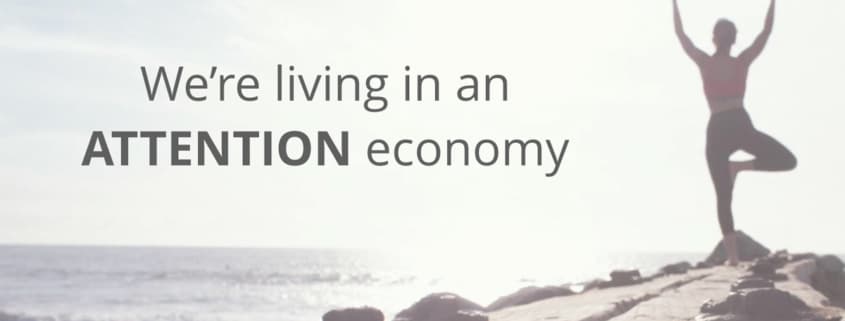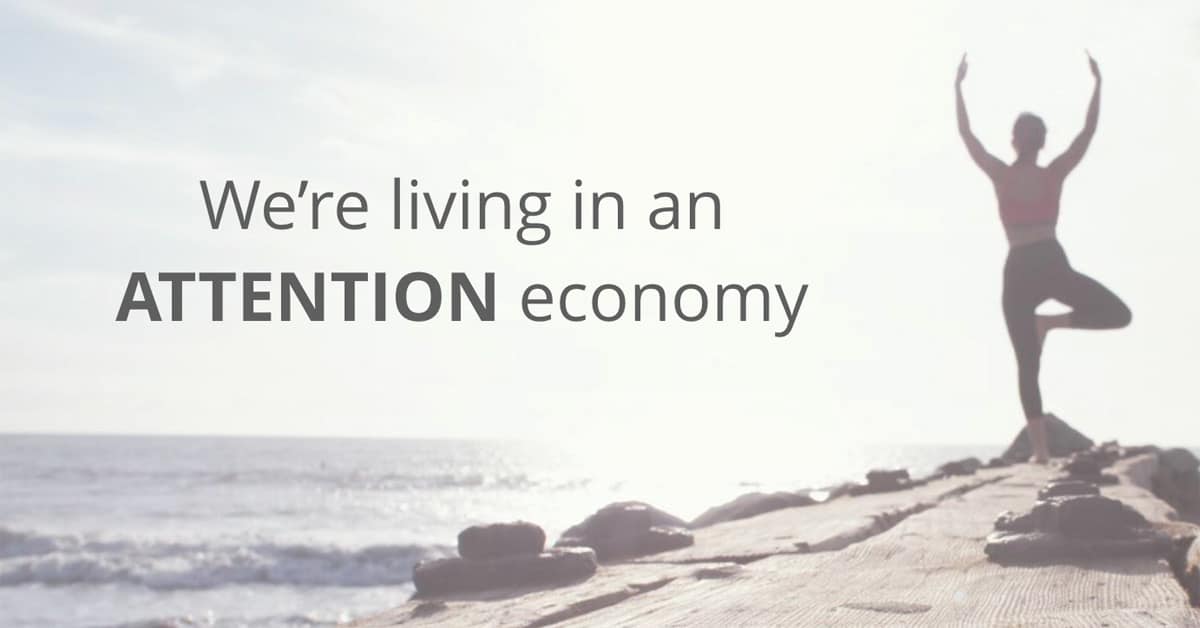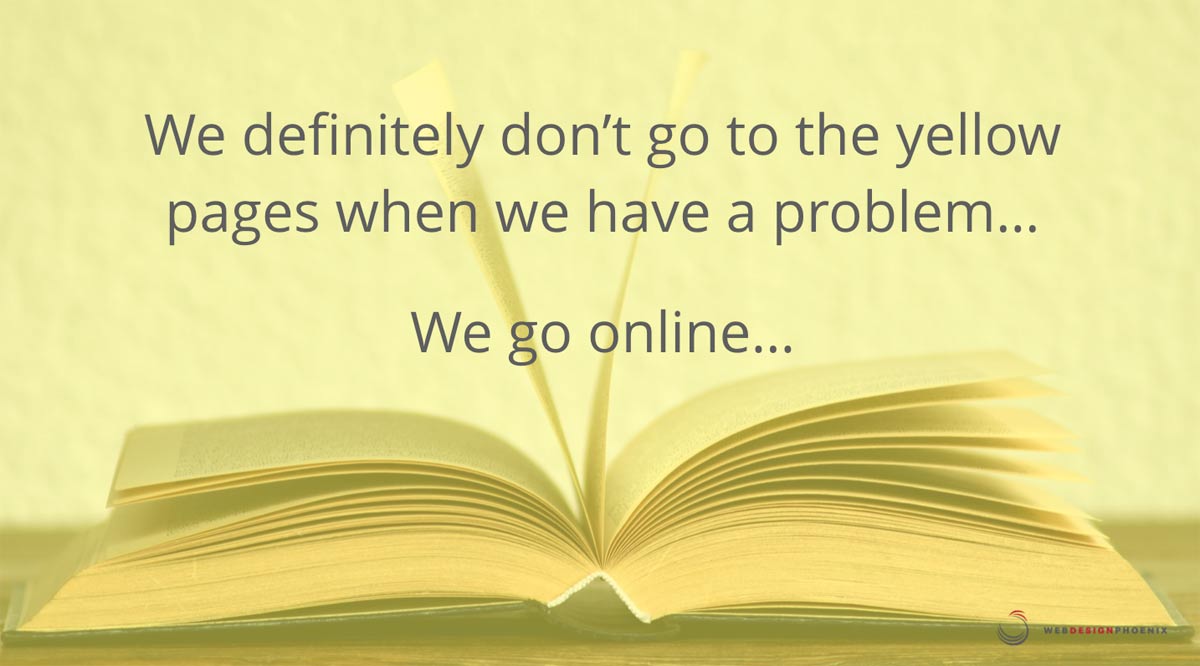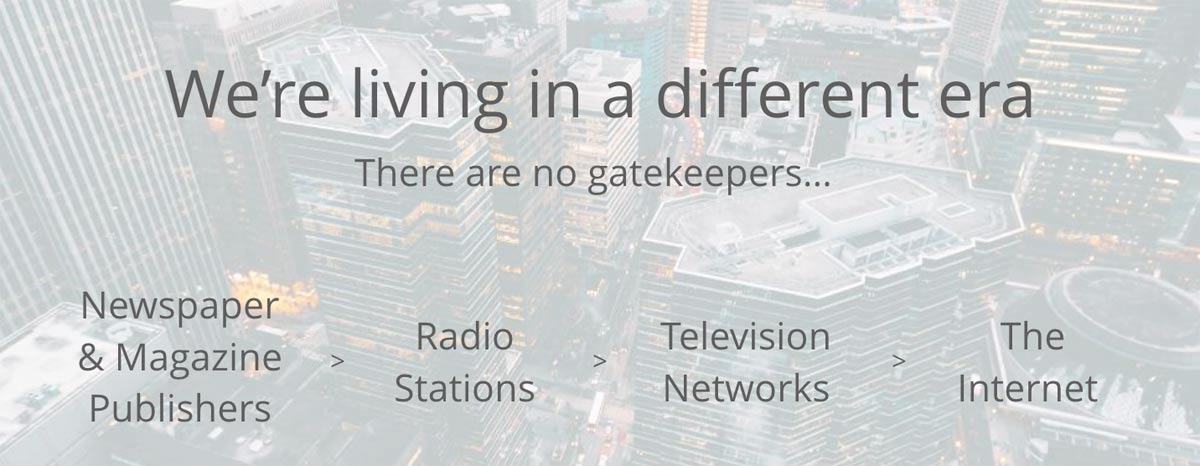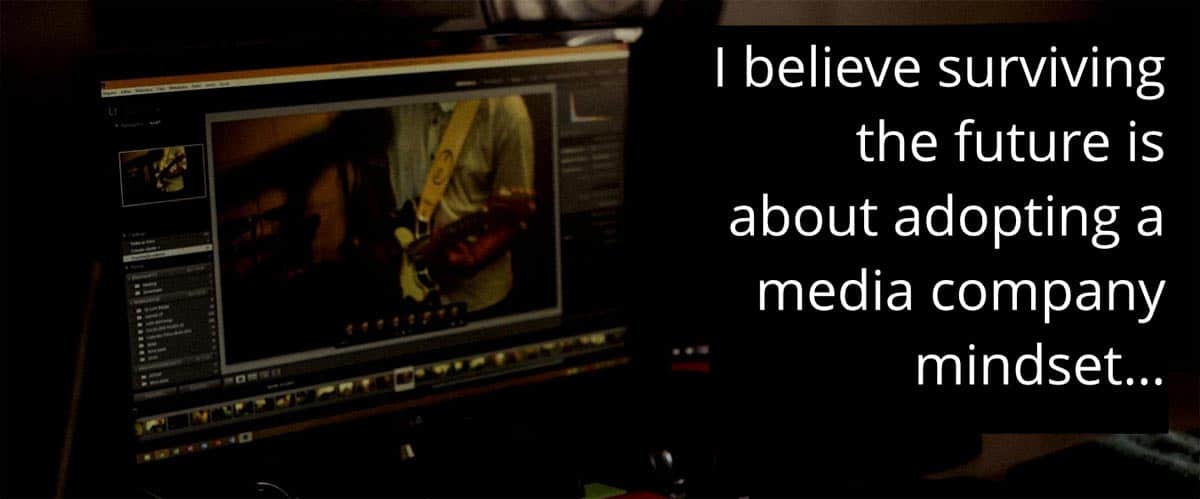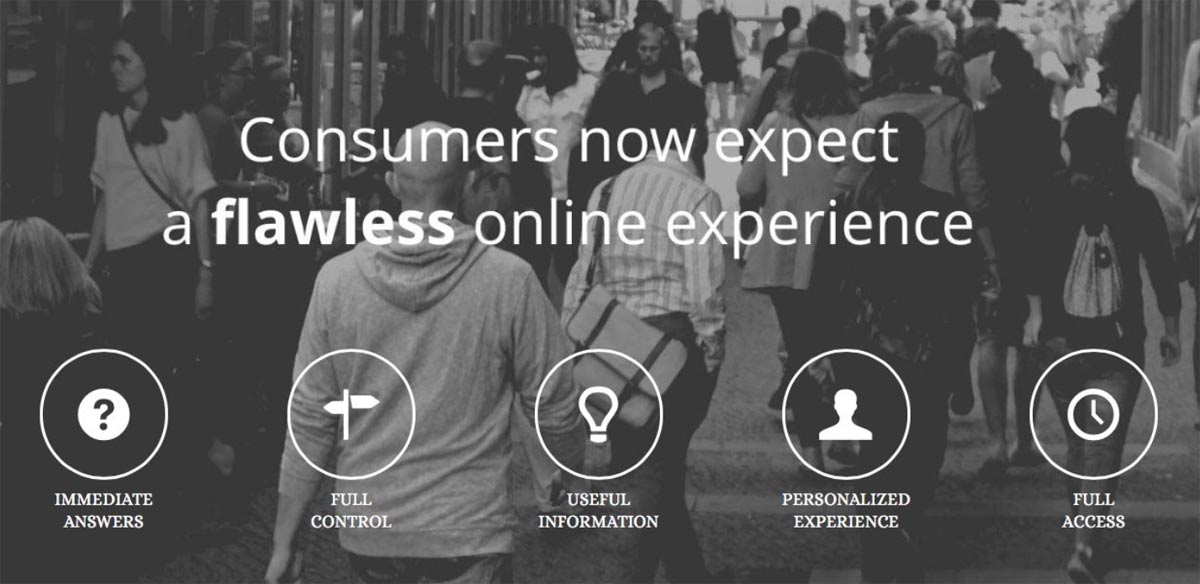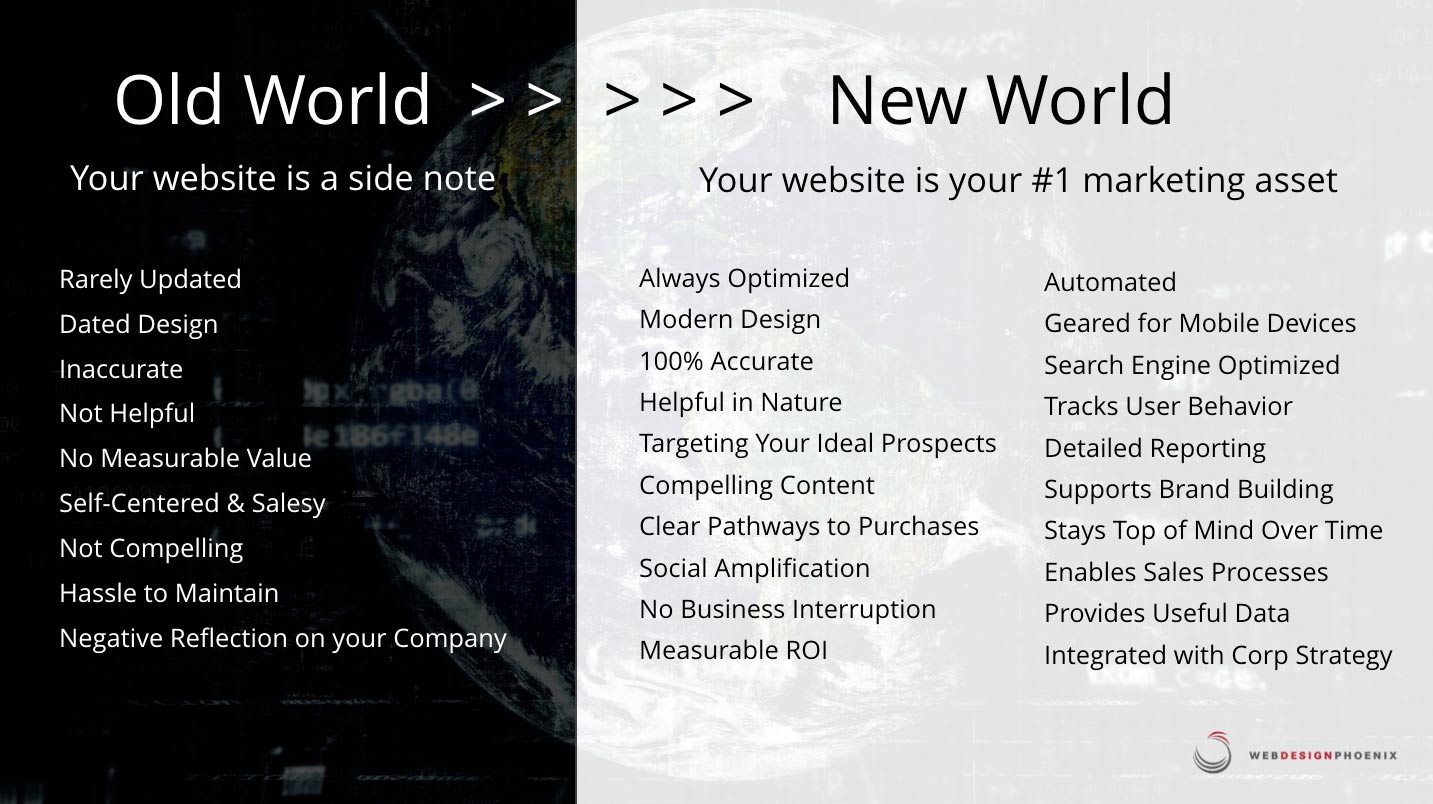Grab Underpriced Awareness Before the Big Guys React
We’re living in an attention economy
95% of the Fortune 500 have declined in market share over the past 2 years. Average life expectancy for these firms has gone from 75 years in the old days to just 15 years today.
Why?
In most cases, it’s because incumbent businesses have mismanaged, or have totally missed, a monumental societal shift. They’ve been too slow to react to where the customer’s attention actually is…think Blockbuster and Netflix…or Uber, or AirB&B…
Here’s what I mean…
The Cost of Advertising & Attention
There’s no reason that magazine, television or billboard ads should cost the same money today as they did in years past. We’re just not paying attention to ads in these spaces like we used to.
- We don’t watch television commercials anymore…we fast forward or pull out our phones
- We don’t stare out the car window and look at billboards…we pull out our phones
- We don’t read magazines waiting at the doctor’s office…we pull out our phones
- And we definitely don’t go to the yellow pages when we have a problem…we go online
Huge Opportunity for the “Little Guys”
This circumstance presents a huge opportunity for small, more nimble companies to sneak in and grab market share. Fact is, the world’s biggest companies haven’t yet determined in a meaningful way that traditional advertising is over priced as compared to the under priced opportunity available through social & digital right now.
But when the big players figure that out and redirect their marketing spend into social and digital avenues, then $80 Billion is going to flood into the system. The price of our attention will go through the roof. The “little guys” will no longer have the opportunity that stands before us today.
So, now’s the time.
To hustle. To get to market quickly. To build brand awareness, and win market share before the music stops.
No More Gatekeepers
It used to be that only companies with the most MONEY and RESOURCES had access to attention.
Not anymore.
We’re living in a new era where there are no gatekeepers anymore. It used to be that you had to pay a bunch of money to newspapers and magazines to win attention. You had to produce elaborate commercials made for radio or television. Today, access is simple. Everyone can publish content on the internet…for FREE.
We know there will be lots of winners and losers in the coming years – although the winners won’t necessarily be the richest, or the biggest, as it’s been in the past.
We’re playing a different game…where everyone has access to free or cheap attention online.
Daytrading Attention – Gary Vee
Check out this 2 minute video. This is Gary Vaynerchuk. He’s a global icon in the digital marketing space – one of the most sought after public speakers on the planet right now.
So, to Gary’s point, if you’re not committed to winning attention online, you’re already losing relevance.
Becoming a “Media Company”
I believe surviving the future is about adopting what I call a “media company” mindset. I believe businesses need to “become” the TV station, the radio station, the magazine, the newspaper…rather than being the commercials on those channels.
He who owns the attention of the end customer wins.
That means delivering content that your target audience finds valuable – not a bunch of sales pitches chasing short-term cash.
Delivering more value than you extract is how businesses win real attention, build trust, and grow authority.
Consumers Expectations Online are Insane…or are they?
Of course, winning more attention is meaningless if you don’t have a system in place to make the most of this attention. We need to convert awareness efficiently into sales revenue and increased customer lifetime value for your brand.
Automation helps, because most buying decisions aren’t made impulsively, but take time and consideration. Finding a way to stay top of mind until your customers are ready to buy is critical.
Consumers now expect a flawless online experience from beginning to end.
Think about how you make your own major buying decisions. You don’t rely on salesmen to help you pick out a car you like.
You don’t call all of the airline customer service numbers to compare prices and flight times. You climb onto the internet and do some research.
If the first site you find sucks, you move on to the next one…it’s that simple.
We call this the consumer power shift. It’s where control of the information and process has shifted from companies to the end consumer.
Here are some things we know for sure about you as a consumer:
- Today, consumers want immediate answers to the questions they have, and the challenges they face…they don’t want to wait.
- You want to maintain full control over your own decision-making process, and the time it takes you to progress to a final choice.
- You want to find useful information that will help you along on your journey, without being subjected to aggressive sales pitches.
- You expect the experience to be personalized to your specific situation, your viewpoints, and the device you’re using (like your phone).
- You expect to have the ability to access all this information from any device, at any time, and from anywhere in the world.
So if you expect to win any attention or business online, you need to commit to this new world with your online presence. It’s not easy. We need to deploy a compelling, strategic ecosystem for winning and retaining the attention of the people you care about.
The Old World
So, in the old days…meaning 5,10, 15 years ago, it was about having a simple online brochure. Your website was just a side note when it came to your marketing strategy. It was rarely updated, and the design quickly became outdated. Information was often inaccurate and not very helpful for users. Content was more self-serving and usual more laden with sale pitches than anything else.
Your web presence just was’t compelling because it was never really leaned on as a true marketing tool. As a result of neglect, it eventually became a negative reflection on your company.
The New World
Now, in the new world, man things have really changed.
We’ve figured out that long, expensive website redesigns are really lousy. Writing big checks without knowing what you’re getting is really bad business practice.
With no resources left over after website launch, it’s pretty much guaranteed that the site will deteriorate into a pile of crap in a matter of months.
Instead, the new world of web design is about the entire ecosystem. The website becomes your #1 marketing asset – the hub of everything.
It’s got a modern design for screens of all sizes, always optimized, and 100% accurate. Content is more compelling and helpful in nature so we can win attention and build trust up front in the buying process.
There are always clear pathways for users to dig deeper into topics they care about and make purchases.
Automation streamlines all the busy work, allowing us to stay top of mind over the long haul without a bunch of manual labor. Behavior tracking improves reporting and helps us personalize the entire user experience from beginning to end.
And at the end of the day, this ecosystem meets your prospects right where they’re paying the most attention…online. The “marketing machine” brings more sales opportunities in the door. Best of all, your salespeople are armed with complete customer history down to clicks and social activity. When you get in the room with them, you know exactly what their pain points are, and what they’re interested in, boosting close rates.
The Takeaway
Guys, gone are the days of the “online brochure”…and hoping people just call the phone number listed on your homepage, or fill out your stupid “Contact Us” form.
When was the last time you filled out a contact us form? Never.
The good news is the transition into the new world is pretty easy. It’s surprisingly inexpensive as compared to traditional advertising and marketing methods. It’s mostly about prioritizing your activities more efficiently based on where people are paying attention.
The End
